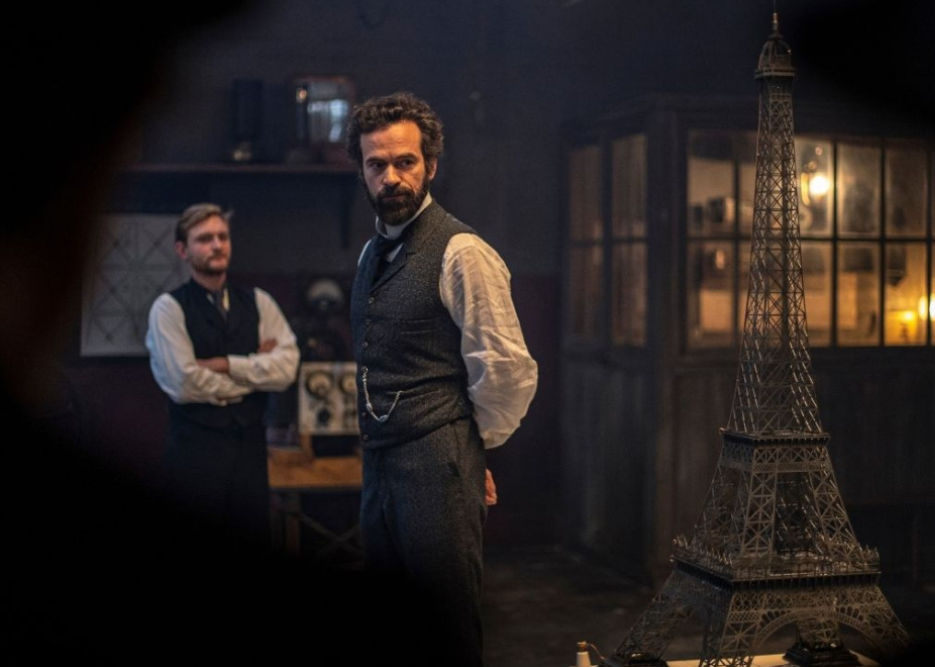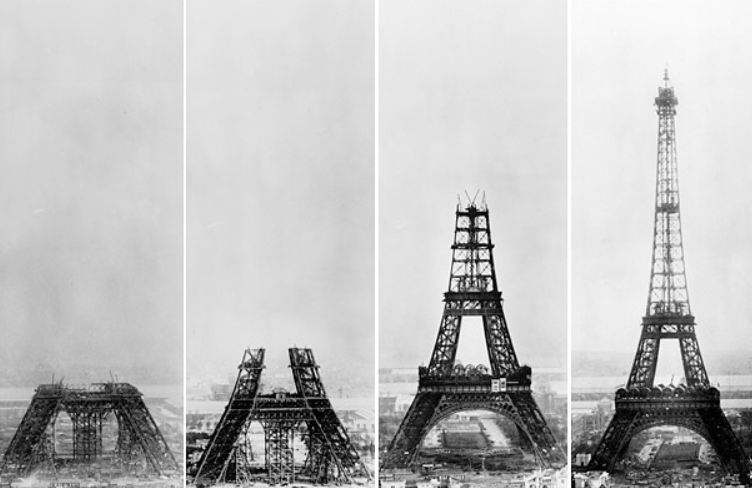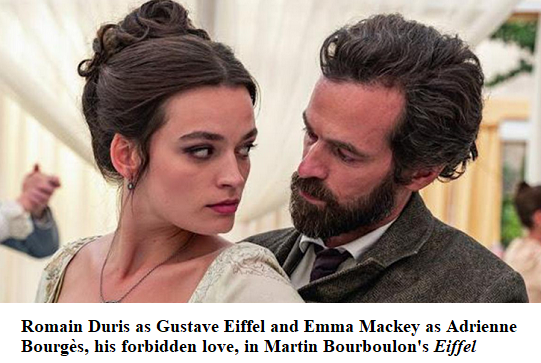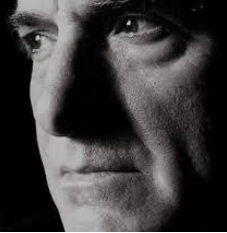
I ought to be jealous of the tower. She is more famous than I am. —Gustave Eiffel
Gustave Eiffel (1832–1923) was born in France in the Côte d’Or. His birth name was Bonickhausen dit Eiffel and his father, Alexandre Bonickhausen, was an ex-soldier who worked as an administrator for the French army. The family adopted the name Eiffel after the Eifel mountains in the region of Germany where their ancestors had come from.
Eiffel is a 2021 French film, directed by Martin Bourboulon, with a script by Caroline Bongrand. Its foreground story tells of a fictionalised romance between Eiffel and his childhood sweetheart, Adrienne Bourgès. The larger background story is about the creation in 1889 of the Eiffel Tower, which became the world’s tallest building until surpassed by New York’s Chrysler Building in 1930. Most people don’t realise that Eiffel wasn’t an architect, but an engineering visionary.
The film opens in 1886, with Eiffel, in his fifties, being celebrated in France for his work on the inner structure of the Statue of Liberty in New York. He had been approached in 1881 by its designer, the French sculptor Auguste Bartholdi, to replace the chief engineer, who had died. Eiffel was chosen for his extensive experience with wind stress and storm resistance.
The statue was based on the figure of Libertas, the Roman goddess of freedom, who had been worshipped in old Rome among freed slaves. Known in France as La Liberté éclairant le monde (Liberty Enlightening the World), it was fabricated entirely at the Eiffel works in Paris, and presented as a gift to America to celebrate the end of the American Civil War.

The head and arm of the Statue of Liberty were completed by Eugène Viollet-le-Duc before he suddenly passed away in 1879 leaving no instructions on how he intended to make the transition from the copper skin to the proposed masonry pier. Eiffel and his structural engineer, Maurice Koechlin, eliminated the masonry pier and instead built an iron truss tower, known as “curtain wall construction”, in which the outside of the building does not bear the load, but is supported by an interior load-bearing framework.
Eiffel’s daughter and collaborator, Claire, wants to give up her studies at law school to marry one of the men who works for her father. Eiffel, a widower for over a decade, gives his permission.
He receives an invitation to submit a proposal for the 1889 Paris Exposition Universelle, which is also the occasion of the centenary of the French Revolution. The organisers are hoping Eiffel will suggest something like the Statue of Liberty. At first he prefers to consider something completely different, more along the lines of an underground rail system. A competition—part of the promotions and preparations for the Exposition—is held to select the best proposal, and 107 projects are submitted.
An earlier design for a 300-metre tower had been imagined, designed and patented by Koechlin and Emile Nouguier, the two chief engineers in Eiffel’s company, in 1884, but Eiffel had not been interested at the time, calling it a “pylon” and a “machin” (a thingy). But now the two men confront Eiffel. “You asked us to come up with some monument ideas for the Exposition Universelle? Well, we have something to show you. A tower, a thousand feet high!”
Koechlin and Nouguier commission an architect, Stephen Sauvestre, to enhance the wrought-iron tower’s appearance, in order to make it more visitor-friendly, adding four columns of lattice-work girders, separated at the base and coming together at the top, featuring several levels, with large glass-walled halls on each level, and a cupola at the top. Eiffel, impressed by the improvements, purchases the rights to the patent from his engineers and enters it in the design competition.
At a dinner party, Eiffel unexpectedly renews his acquaintance with Adrienne Bourgès, whom he had met and fallen in love with when they were younger, when her father had refused to accept Eiffel’s proposition of marriage. She was now the wife of an influential newspaper columnist, Antoine de Restac. Eiffel and Bourgès begin a discreet affair.
The Exhibition judges announce their decision to select Eiffel’s tower. He gives a rousing speech to his workers that they will be changing the world with this project. He declares, “I am a man with an idea grander than himself” and asks for a thousand men, “hardworking men who do not fear heights”. He assures them, “I want no deaths,” and hires engineers from four different schools to redo and confirm his own meticulous calculations.
There are huge protests in the Parisian streets over the tower’s radical iron design. Newspaper headlines trumpet: “Angry Residents Rise Up Against Tower”, “Street Lamp of Shame”, “Eiffel Suicide!” and “Gustave Eiffel Has Gone Mad: He has Been Confined in an Asylum”, with angry demands to cease construction. Residents of the Champ de Mars file a lawsuit against him. Pope Leo XIII declares that the tower will overshadow Notre Dame, to which Eiffel replies: “We are bringing them closer to God.”
A petition against the erection of the tower is sent to Jean-Charles Adolphe Alphand, the Minister of Works, and is published by Le Temps. The forty signatories include esteemed artists such as Charles Gounod, Charles Garnier (the architect of the Paris Opera House), Paul Verlaine (who called it a “belfry skeleton”) and Guy de Maupassant (who saw it as “a high and skinny pyramid of iron ladders” and called Eiffel “a boilermaker with delusions of grandeur”), and the art critic Joris-Karl Huysmans, who called it “this hideous column with railings, this infundibuliform chicken wire, glory to the wire and the slab, arrow of Notre-Dame of bric-a-brac”. The petition declared:
To bring our arguments home, imagine for a moment a giddy, ridiculous tower dominating Paris like a gigantic black smokestack, crushing under its barbaric bulk Notre Dame, the Tour Saint-Jacques, the Louvre, the Dome of Les Invalides, the Arc de Triomphe, all of our humiliated monuments will disappear in this ghastly dream. And for twenty years … we shall see stretching like a blot of ink the hateful shadow of the hateful column of bolted sheet metal.
Despite negative criticism and setbacks, work continues on the tower.

Unexpectedly, the workmen go on strike. They want nine-hour days and more money. Eiffel offers to double the wages of all who stand by him to reach Level One—and he persuades them it can be done, not in two months, but in two weeks! When his company bank cancels his line of credit, he is forced to mortgage everything he owns, including his patents. His financial director tells him it’s madness, but Eiffel replies, “I’ll finish even if I am in debt for life.”
To reach Level One, four independent slanting iron latticed pillars have to be joined together. One of the bolt holes in a connecting girder, is three centimetres short of its reciprocal pillar hole. A workman, suspended over the side of the structure, and held only by one leg by another worker, attempts to force a bolt in, but it won’t go through.
Standing on top of the structure, Eiffel uses a megaphone to instruct the crew to release sand from the sandjacks, tilting the entire side of the groaning structure three centimetres. But the movement also makes it sixteen millimetres too low. By means of gigantic hand-cranked hydraulic presses, capable of exerting a force of 800 tons, the side is lifted, and the bolt is finally pounded into place, completing Level One, to the cheers of the men. Their work goal now becomes an aggressive twenty metres of height per month.
Eiffel and Bourgès’s affair is threatening to derail his reputation. Her husband has become aware of it and threatens to expose them, which would discredit and ruin Eiffel. Bourgès decides to break off with Eiffel for the good of his career, and she and her husband leave Paris suddenly, without notifying him. Distraught and angry, Eiffel instructs his workmen to finish the tower with rivets instead of bolts so it can never be torn down.

THE director of Eiffel, Martin Bourboulon, decided to shoot the film in the same Cinemascope format as David Lean’s Bridge on the River Kwai. In an interview with Paris Match, regarding Eiffel’s relationship with Bourgès, he said, “We based it on letters written by Eiffel to his mother … [and] we must not forget that Eiffel was charismatic, a rather attractive leader of men … the real promise of the film is this: you will never see the Eiffel Tower again in the same way.” Well, I certainly won’t. The nineteenth-century building mechanics alone make this an unforgettable film.
Bourboulon is currently adapting the classic Alexandre Dumas novel The Three Musketeers into a two-film project, shot consecutively: The Three Musketeers: Milady and its prequel, The Three Musketeers: D’Artagnan, both due to be released in 2023. He has a budget of $73 million, nearly three times that of Eiffel’s $27 million.
The French novelist Caroline Bongrand wrote the script for Eiffel twenty-four years ago. In an interview with Daniel Dercksen of The Writer’s Studio she recounted her first interview with a producer. She pitched two ideas to him, both of which he rejected. When he asked her, sarcastically, if she had anything else, she says she told him:
I do, but that it’s too expensive for him. I don’t know why I said this but he immediately wants to know more. I tell him that Gustave Eiffel built his Tower out of love and I am the only one who knows the true story behind this. I’m totally bluffing, but it works: he hands me a contract to sign. I’m in a total panic.
Romain Duris, who plays Gustave Eiffel, was the recipient of the 2007 Molière Globes de Cristal Award for Best Actor for his lead role in the film Moliere. He stars as Aramis in both of Bourboulon’s forthcoming Musketeer films.
Peter Debruge of Variety commented on the movie, “Not a biopic so much as a sketchy piece of historical fiction—Eiffel identifies itself as librement inspiré de faits réels, which roughly translates to ‘a made-up crock of hooey’.” But Lisa Nesselson of Screen International wrote, “The Eiffel Tower rose in two years without power tools or computers or construction cranes. Martin Bourboulon’s ambitious, handsomely appointed and unapologetically old-fashioned Eiffel took 25 years to make it to the screen.”
The Eiffel Tower, or Dame de fer (Iron Lady) was completed on March 31, 1889. Eiffel celebrated on the top of the tower along with politicians and members of the press. The elevators were not yet in operation so they had to climb up step-by-step, which took over an hour. A French flag was hoisted from the pinnacle and a twenty-five-gun salute fired from below. On the cupola of the tower, Eiffel received a decoration from the Legion of Honour.
Originally, the tower was scheduled to be demolished after twenty years, but due to its enormous international popularity, it remains standing and will continue to do so most likely in perpetuity. But it has fallen into disrepair. Reuters reported that it was “riddled with rust and … is being given a cosmetic 60-million-euro paint job ahead of the 2024 Olympic Games in Paris”. It has been completely repainted twenty times.
In 1892, three years after the Paris Exposition, Eiffel became caught up in the Panama Canal Scandal, the largest financial corruption scandal of the nineteenth century. Building a canal across the Isthmus of Panama to connect the Pacific and Atlantic oceans, in order to bypass the lengthy shipping route around the southern tip of South America, had been one of the most difficult engineering problems ever attempted. Before the United States took over the project and completed it in 1914, the French had a go at it. The French diplomat Ferdinand de Lesseps, who was behind the successful construction of the Suez Canal, raised the enormous investment capital required through his Panama Canal Company.
But Lesseps’s company went bankrupt in 1892, losing the savings of 800,000 investors. Many of the high losses were due to the unforgiving climate of Panama. During floods, the Changres River, at the mouth of the canal, rose thirty-three feet, and almost 22,000 workers died from yellow fever, malaria and other tropical diseases, as well as from the bites of venomous snakes and spiders.
One hundred members of French parliament were accused of taking bribes from Lesseps to hide his company’s true financial position from the public. All were acquitted, except the city development minister, who was sentenced to five years in prison. The financial adviser of the company committed suicide. Many defendants fled to England.
Dominique Mataillet said in France-Amerique:
Finding himself in legal turmoil after the Panama scandals, Eiffel was convicted of fraud and imprisoned for several months. Despite later being acquitted, his reputation never recovered and his career as a businessman was over. He stepped down from his company and devoted his time to scientific research in meteorology and aerodynamics, developing a passion for the fledgling aeronautic sector.
Eiffel said his work represented “the art of the modern engineer”. He was awarded the Samuel P. Langley Medal for Aerodromics by the Smithsonian Institution in 1913. Speaking at the presentation of the medal, Alexander Graham Bell said:
His writings upon the resistance of the air have already become classical. His researches, published in 1907 and 1911, on the resistance of the air in connection with aviation, are especially valuable. They have given engineers the data for designing and constructing flying machines upon sound, scientific principles.
Eiffel died in 1923, at ninety-one years of age, in his mansion in Paris.
___________________
Our five-year old granddaughter, Mistica, over a decade ago, came back from a visit to Paris with her parents, after visiting relatives on her mother’s side in Italy. After asking her about her trip, my partner, Lin van Hek, her Australian grandmother, wrote a poem, “My Granddaughter Like Rain”:
My granddaughter like rain
goes to visit
her Italian grandmother
with family, for the holidays,
then to PARIS.
Yes she tells me, I saw the Awful Tower.
She has gone far from who she was.
Wonderful dialect winds
its way through her sentences.
She retains affection for me
but her other grandmother
has marble floors and a fountain.
Bellisima, says
my granddaughter like rain.
 Sign In
Sign In 0 Items (
0 Items ( Search
Search










50-odd years ago when I was at school in either year 7 or year 8 – or form 1 and form 2 as it was then – we saw a film in French class from about 1950 in which four adventurers climbed up the outside of the Eiffel Tower and then parachuted down. One of the four was Jacques Cousteau. It’s a clear memory, but I cannot for the life of me find any mention of this film on Google.